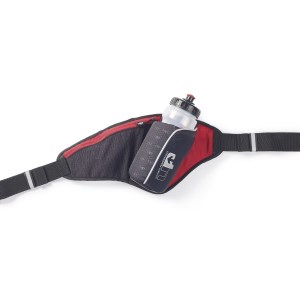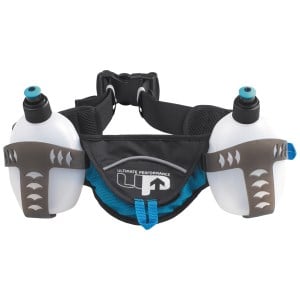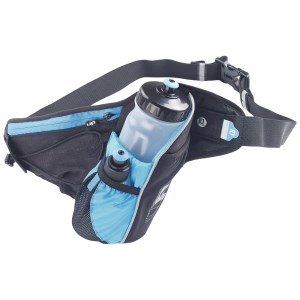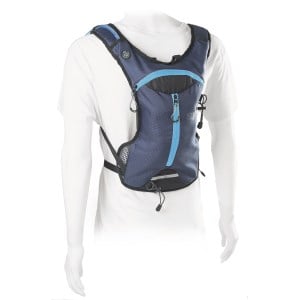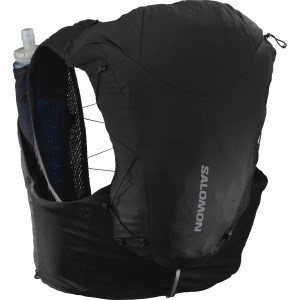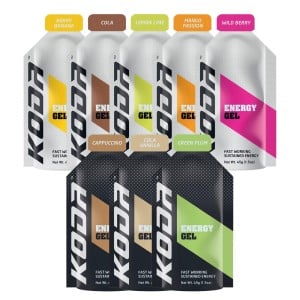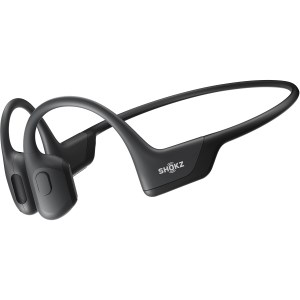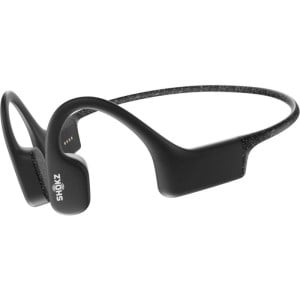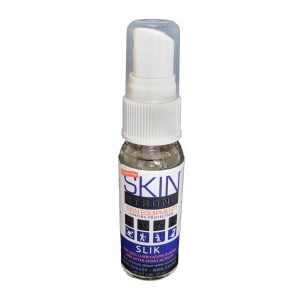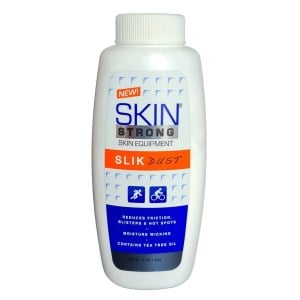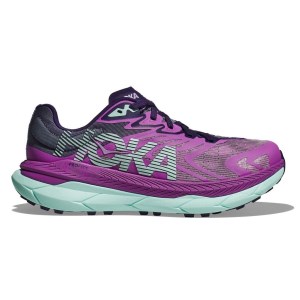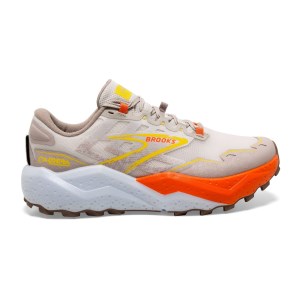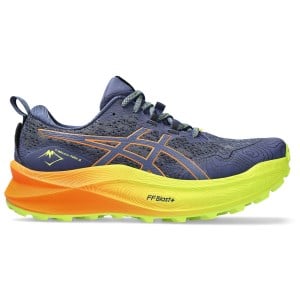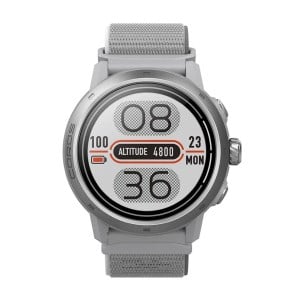Trail Running Is Harder Than Road Running, Here's How To Make It Easier
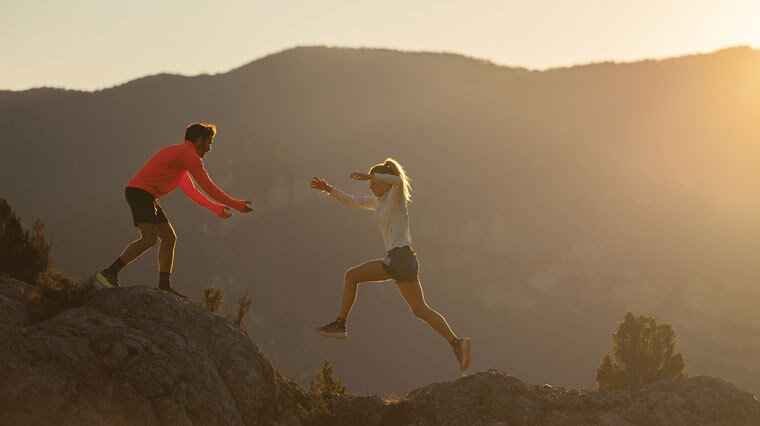
Trail running is harder than road running – leaving consistency on the road as you trade smooth, linear urban surfaces for the uneven, unpredictable nature of the trail.
Saying that, trail running has just as many benefits as it has challenges and although it may be harder in terms of navigating trip hazards like sharp twigs, stones and roots – the ground is literally softer under your feet, making it easier on your knees and joints.
Trail running is good for you – helping you shake up your routine and putting stress on your muscles in a new way. Physical stress doesn’t have to be a bad thing. However, it can cause problems when targeted on the same muscles and joints, potentially leading to overuse injuries.
In terms of the literal ups and downs of trail running, the stress or load on your muscles is constantly being dispersed differently as your stride pattern must shorten or lengthen to adapt to rough terrain, fly over natural debris or up/down hills. This helps to protect muscles that are most commonly at risk of overuse during road running and strengthens muscles that are typically underused.
The positive benefits of running on your mental health are just as noteworthy as the physical benefits, particularly on the trail. Trail running allows you to soak in a new perspective away from the hustle and bustle, stimulate your senses with the rejuvenating sights, scents and sounds as well as gain a fresh appreciation of the natural world.
Sportitude's top trail running tips will help you start your trail running journey smoothly, keeping every stride feeling light, sure-footed and chafe-free, and inspire you to hit the trail in your sweat sessions to come.
1. Wear Your Hydration
What do we mean by wear your hydration? We’re talking about gearing up with running hydration packs or running waistpacks to keep a source of water close without feeling encumbered by it.
When it comes to trail running, you get more out of a minimalist design that sheds off bulk and weight, so you can run feeling free and unrestricted. Top brands like Salomon and 1000 Mile have got it right with running packs, running vests and waistpacks designed to provide a body-conforming and bounce-free fit.
Whether you’re choosing between a hydration pack that stores a hydration bladder on the back or soft flasks on the front, or have your eye on a hydration waistpack that offers angled bottle storage - it’s up to you how to hydrate and carry water on your runs. Just make sure you bring enough water (and a bit extra) for the conditions and duration of your trail run and consider doing the sweat rate test to know more about the way you sweat and your personal hydration needs.
Check out our favourite on-the-go hydration solutions for trail running below:
Running Hydration Belts
-
1000 Mile UP Ribble II Hydration Belt With Water Bottle - 650ml
-
1000 Mile Ultimate Performance AiraForce 2 Nutrition Belt
-
1000 Mile UP Stockghyll Force v3 Hydration & Nutrition Running Waistpack
Running Hydration Packs
2. Fuel With Energy Gels To Go The Distance
When it comes to on-the-go running nutrition, runner’s often question “Is it easy to carry?”, “Is it easy to eat?” and “Is it effective at providing energy?”
Energy gels from research-driven and performance-focused brands stay true to the needs of runners – providing a lightweight, fast-acting source of carbs and replenishing electrolytes lost in sweat to improve the endurance of your working muscles.
Energy gels in their nature won’t take up much space in your running hydration pack or running waistpack, with compact, pocket-friendly sizes to fuel up on-the-go. This makes them a no-fuss solution for the trail – because it’s worth being wise about what you’re carrying and the weight of your gear – especially if your goal is hitting a new PB.
Having this boost of easily digestible energy to lean on will help you ward off ‘jelly legs’, 'hitting a wall' and enhance your performance and stamina – so you won’t have to cut your trail run short. Designed for endurance sports, these advanced energy gels from Koda, Huma and SIS tick all your boxes to run further and faster without fatigue setting in.
Want to know the full story of ultramarathon nutrition? Check out Sportitude's Ultramarathon Nutrition & Hydration Guide for everything you need to know.
3. Keep Your Ears Free To Listen
One of the great freedoms of trail running is trading in traffic noise for the natural choir of birds singing, streams flowing, crickets humming…
Going off the beaten track offers a rejuvenation of the senses, providing a fresh perspective and boosting your mood simply by taking the time to appreciate the natural world – the sights, scents and sounds.
If you want nature to be the soundtrack to your trail run, by all means keep your headphones at home and soak in those feel-good vibes. However, if you’re a runner that values the benefits of music on your running performance, you can wear running headphones but choose them wisely.
Shokz offers the best headphones for runners and trail runners. Whereas noise-cancelling headphones put you in a soundproof bubble, Shokz open ear headphones do the opposite – allowing you to listen to your favourite tunes through bone conduction technology without blocking out ambient sounds.
This means you can personalise every stride with your choice of music while remaining auditorily aware of your surroundings – the approach of mountain bikers and fellow trail runners, wildlife or vehicles when you head back to the road. They're lightweight, durable and even moisture-repelling to meet the needs of everyone from the everyday athlete to serious trail blazers – ensuring sweat and rain won’t cause a problem.
-
Shokz OpenRun PRO Wireless Bluetooth Bone Conduction Headphones
-
Shokz OpenSwim Wireless Waterproof Bone Conduction MP3 Headphones
4. Light Up Your Path
The torch app on your smartphone just doesn’t cut it when you depend on a reliable source of lighting on-the-move. Particularly if your trail running in an area with a dense, shade-forming canopy, running visibility accessories can help keep you on track and prevent any trip ups.
This may include wearing a lightweight, hands-free running headlamp like the 1000 Mile UP LED Head Torch that's designed with the needs of runners and adventure-seekers in mind. Whether you’re taking on the concrete jungle after dark and want to stand out to vehicles, cyclists and pedestrians, or you’re exploring the real wild at the low light hours of dusk and dawn and need to light your way, a headlamp is a safety essential in your running kit.
If you’re used to running in urban environments at night, trail running at night is a completely different story - with no streetlights to guide your way it can be easy to lose your bearings. Remember the ground beneath your feet isn’t going to be smooth and consistent like a road, and even well-maintained trails will become littered with hazards like roots, stones and sticks over time.
Only trail run at night on routes you’re familiar with, bring a trail buddy and as always, let a family or friend know your location and estimated time of return.
5. Protect Your Skin From Chafing
Blisters and chafing are #1 on your list of pesky distractions to deal with when trail running. Skin-on-skin and skin-on-fabric friction can result in painful irritation – that rubbed raw feeling that you can’t shake off.
The philosophy that prevention is better than cure is absolutely relevant here. Anti-chafe and anti-blister creams and sprays like Skin Strong can be applied to your high-friction zones – in between your toes, thighs, underarms, beneath sports bra straps or any sensitive areas which can suffer from painful chafing.
Available in both larger tubes for home and grab-and-go portable sizes to top up your protection on-the-run – there’s no reason you can’t keep your skin running happy from road to trail.
-
Skin Strong Slik Anti-Chafe Spray - 30ml
-
Skin Strong Slather Anti-Chafe & Anti-Blister Cream - 118ml Tube
-
Skin Strong Slik Dust Anti-Chafe & Anti-Blister Powder - 84g
For more skin care inspiration and anti-chafe products, check out the last section of the Mandatory Gear Guide: Everything You Need To Run An Ultramarathon.
6. Wear Trail Running Shoes For Traction, Stability & Protection
“Can I use road running shoes for trail running?”
It’s a question all beginner trail runners ask and you’ve probably guessed the answer yourself – we wouldn’t recommend it if you want to make your trail runs easier!
Don’t sweat it because there are many benefits of using multiple pairs of running shoes, including extending the lifespan of each and every shoe in your running rotation and reducing your injury risk.
Trail running shoes make a big difference in allowing you to get closer to nature in confidence - with cushioned platforms like the Brooks Caldera 6 or Brooks Caldera 7, Asics Trabuco Max 2 and Hoka Tecton X 2 providing protection between rugged trails and your feet when the outdoors is calling.
You can see – or even better – feel the difference between road running shoes and trail running shoes if you run your hands over the outsole.
Even adventure-ready barefoot running shoes like Vivobarefoot's trail running models feature a nubbed surface underneath to cling onto uneven terrain, while keeping the sensory feedback of your feet sharp by limiting materials underfoot . If you prefer improved proprioception on the trail over cushioning, the Vivobarefoot Primus Trail Knit FG women's trail running shoes or Vivobarefoot Primus Trail All Weather FG men's trail running shoes could be the trail shoe for you.
Traditional trail running shoes go the extra mile with a tread pattern that’s either versatile for firmer grounds with small, tight lugs or more prominent, spaced-out lugs to prevent catching mud on soft and damp grounds.
Road running shoes simply don’t offer the stability or sticky traction you need on natural terrain. With harder rubber underfoot, they’re ideal at withstanding repetitive impacts on solid, smooth road surfaces. If you were to take them to the trail, this hard-wearing rubber wouldn't provide adequate grip to bite into the softer, uneven surface of trails - potentially increasing your risk of rolling an ankle or other injury as you navigate tricky terrain.
The tread of trail running shoes often delivers aggressive, multi-directional grip to take into account that your stride isn't always steady, consistent or linear on the trail - as you're potentially dodging natural debris like sticks and roots or facing steep inclines or descents.
Up top, the upper of trail running shoes is generally more durable than road running shoes to prevent being punctured by sharp twigs and other trail debris, which can quickly turn 'running in bliss' into 'stumbling in pain' if it breaks through to your skin. Trail running shoe uppers may also feature waterproof materials like Gore-Tex to shield against the elements.
The key message is that having the right shoe for the right job not only increases your safety but your confidence, allowing you to run more effortlessly and without hesitation.
Want to know more? Check out Trail Running Shoes vs Road Running Shoes and What's The Best Trail Running Shoe For You?
Trail Running Shoes For Women
Trail Running Shoes For Men
7. Track Your Trail Runs With A GPS Multi-Sports Watch
Whether you’ve done your first couple of trail runs and have earned a taste for it or you’re a seasoned adventure seeker looking to know your body and the trail better, we’d highly recommend the Coros Apex 2 Pro Premium Multi-Sports Watch.
It has everything from tracking your heart rate zones (to help you know when to reign in the intensity and recover from overtraining), to sleep monitoring and nutrition/hydration alerts, to a compass on your wrist to take your explorations to new heights.
This durable, touchscreen-friendly design helps you know what’s coming and where you’ve been. It’s able to communicate with all five major satellite systems (GPS, GLONASS, Galileo, QZSS and Beidou) and offers razor-sharp accuracy with dual-frequency GNSS system. This means no matter whether you're surrounded in a maze of skyscrapers or trekking through sparse wilderness, it’ll help you find your way.
This puts it among the best running watches in recent years, equipped with innovative navigation technologies and offline mapping, while packing a punch when it comes to battery life (lasting up to 30 days in normal use mode, 75 hours in standard full GPS mode or 45 hours in UltraMax GPS mode, with all systems switched on). It’s ready for everything from your next (half) marathon or ultramarathon, to adventurous days of hiking in the great outdoors.
Happy trail running!
If you liked this, then you'll love:
6 Need-To-Know Gear Hacks For Beginners To Start Trail Running
Trail Running Shoes vs Road Running Shoes
Australian Snake Bite Prevention & Treatment On The Trail
Mandatory Gear Guide: Everything You Need To Run An Ultramarathon
Ultramarathon Nutrition & Hydration Guide: Carbs, Electrolytes & Caffeine

